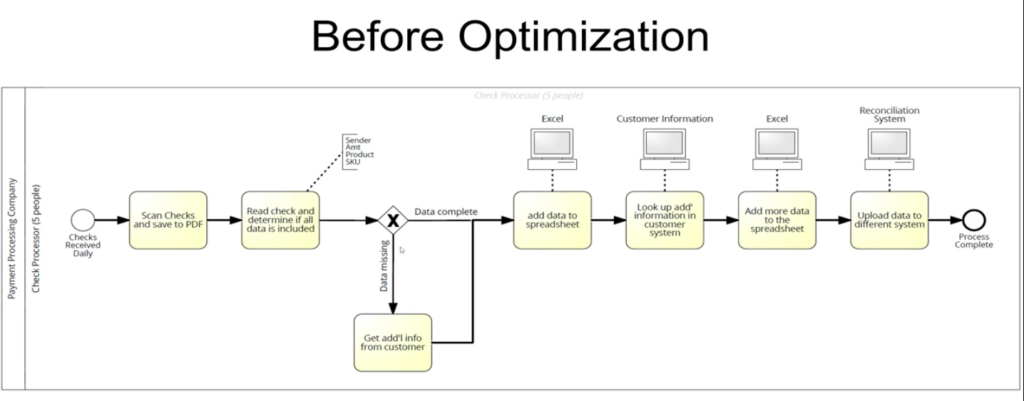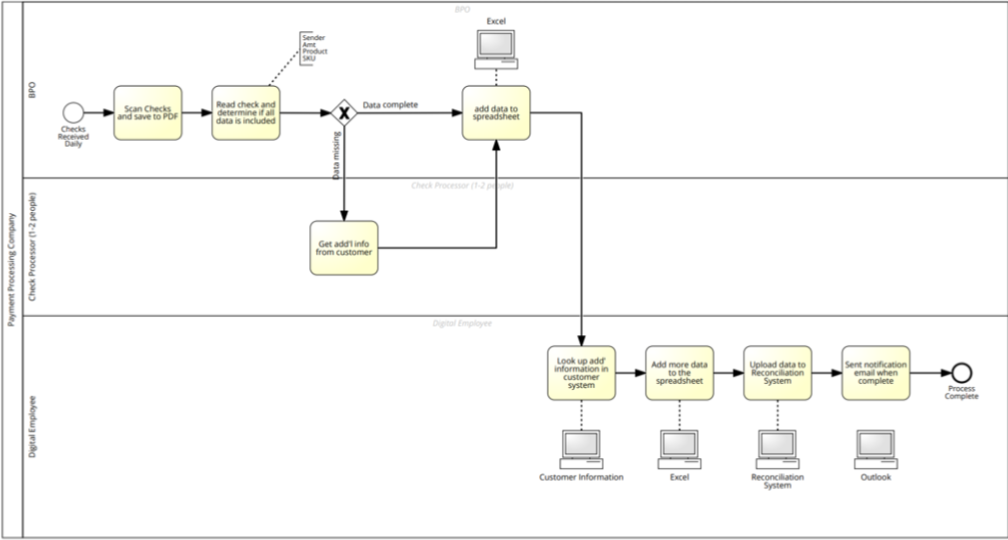Technology is always evolving, and as new systems and capabilities mature, they become more affordable. While it began as an enterprise-grade solution requiring heavy investment, Robotic Process Automation (RPA) – and its many benefits – is now available to small and mid-sized businesses. This newfound accessibility raises an interesting question about how work gets done: should companies continue to rely solely on human talent or switch to RPA’s digital workers? And how do Business Process Outsourcing (BPO) partners fit in?
Simply stated, to remain competitive, small and mid-sized businesses need to utilize at least two and quite possibly all three. The challenge is in determining how to weave all three types of workers together to create a cost-effective and sustainable workforce. Read on to learn more about each worker and discover how they can be effectively combined.
Understanding Employees, Digital Workers, and BPO Partners
Employees
In the context of this article, human workers are uniquely suited for work that requires emotional intelligence and navigating abstract concepts. Our ability to work creatively and innovate to solve problems is where the magic happens (think where the moniker “work smarter, not harder” truly comes from). That said, we tend to get bored doing repetitive tasks and are prone to both error and bias.
For tasks that require creativity, empathy, relationship-building communication, and judgment, you’ll want to have living, breathing humans performing them.
Pros:
- Capacity for creativity and inspiring others.
- Ability to understand abstract concepts.
- Adaptable to new situations.
- Ability to empathize.
- Ability to apply judgment.
Cons:
- Can be unpredictable or unreliable.
- Require shuffling of resources to accommodate illness or vacation.
- Become easily bored and prone to error with repetitive work.
- Require investments of both time and money for training, benefits, management, etc.
Digital Workers
Digital workers, often referred to as RPA “bots,” are computer programs that operate 24/7 to complete whatever tasks they’ve been programmed to do. They don’t have preferences, just priorities, so they execute their work perfectly without respect to department or time zone. In doing so, they free up your employees’ time to focus on work best suited for humans.
Since digital workers complete tasks per a very specific set of instructions, they do require initial training (aka programming) as well as updates over time as systems change. This is true for your employees as well, but humans can use their creativity to fill gaps in their training whereas a bot’s programming must include detailed, step-by-step instructions. In short, ongoing monitoring and maintenance are required to keep these tireless workers running optimally.
Pros:
- Available to work 24/7.
- Complete tasks tirelessly and on time, every day.
- Execute tasks per a predetermined priority, regardless of process or department.
- Become less expensive over time as technology costs decrease.
Cons:
- Require upfront investment and training (much like a new employee).
- Limited by the skill of the team programming and maintaining the automation code.
- Need ongoing maintenance to ensure long-term stability.
Business Process Outsourcing Partners
BPO partners are individuals or firms, sometimes located offshore, that are contracted to manage industry-agnostic tasks like payroll, HR administration, or IT help desk support. Since these kinds of tasks are similar across organizations, BPO firms are structured to provide a more affordable solution than if a company hired a person or team to complete the work.
The potential challenge with BPO partnerships is that you’re still dealing with human workers, and you now have limited control over their output and behavior. Availability and communication may suffer as these providers have other clients to serve as well, and a semi-annual or annual contract means you’re locked in, even if the firm is not a good fit for your business.
Pros:
- Enable managers and employees to focus on work that creates value.
- Provide an opportunity to reduce costs.
- Establish redundancy as multiple people are trained to support your business.
Cons:
- Still reliant on humans who are prone to mistakes.
- Process changes can be slow and expensive to implement.
- Communication may not be as timely as needed.
How to Bring Different Workers Together
Most companies will need two, if not all three, of these kinds of workers to remain competitive and achieve desired business outcomes. That said, you must be willing to rethink and reconfigure how work is done in your organization to reap the rewards of cost and time savings.
To illustrate, let’s consider a real-world example. At this payment processing company, five FTEs manage a very high volume of physical checks each day per the simple flow diagram below.

If we disaggregate and evaluate each respective step in the process, we can reimagine the flow of work with multiple types of workers in mind. In this example, the most efficient and affordable approach is to utilize all three types of workers as follows:
- Keep employees involved but only to resolve problems and interact with clients.
- Hire a low-cost, outsourced vendor to physically handle the checks and digitize them.
- Program RPA bots to fully process the raw data extracted from each check.
Here’s the flow diagram for the redesigned process:

Once the process is optimized, the payment processing company benefits from lower costs, higher quality, and greater throughput.
Success Requires All Types of Workers
Utilizing the right labor for the right task for your organization’s processes is critical for future success.
- Prioritizing human-only work for your employees will motivate and inspire them.
- Partnering with a Business Process Outsourcing firm for manual, repetitive tasks is cost-effective and enables your team to remain focused on value delivery.
- Incorporating digital workers into your high-volume, computer-based work reduces errors and enables your business to scale at a much lower cost.
Leaders that recognize the variety of workers available and learn how to effectively blend them into their operations will undoubtedly enjoy a stronger position in the market, increased profit margins, and improved employee engagement and retention.
Are you ready to rethink the age-old expression, “Get the right people in the right seats”? Let us know by getting in touch with us here. If you’re interested in learning more about RPA and its many benefits, please subscribe to our blog.

